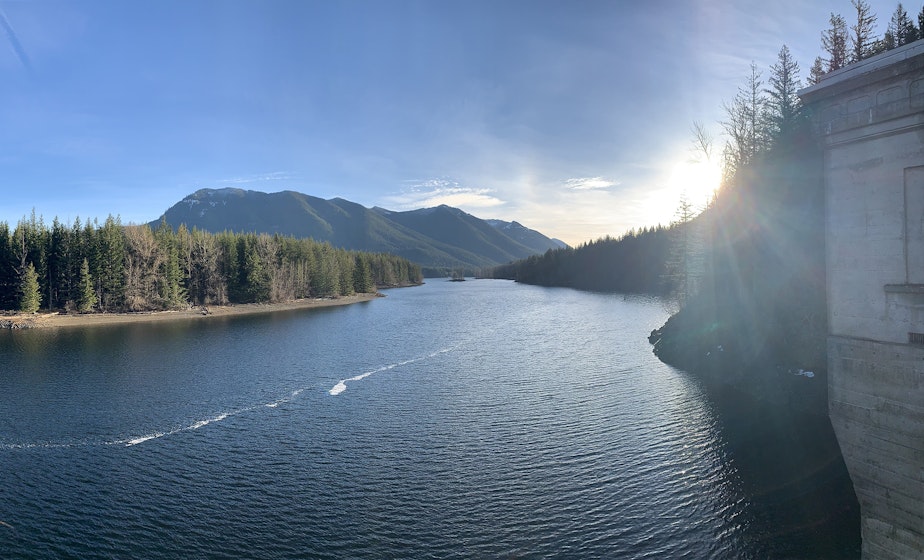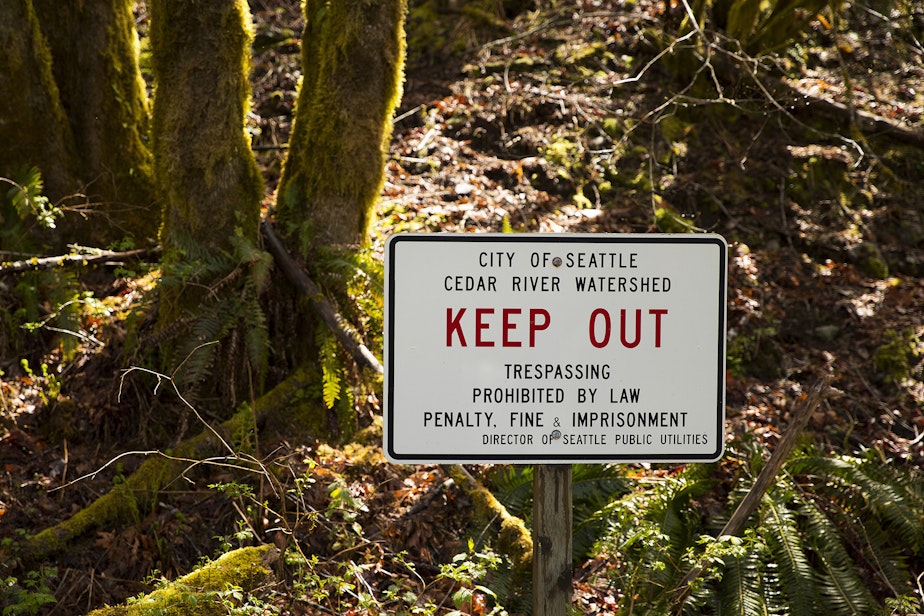The forest that gives Seattle its water: Travel For Good

A sprawling forest east of North Bend shelters the largest source of Seattle's water supply.
The sound of rhythmic drumming greets visitors arriving at the Cedar River Watershed Education Center. Suspended copper tubes release small amounts of water onto the taut skins of drums. A computer program controls the water hitting the drums to produce upbeat rhythms. The art installation is meant to make visitors reflect on the versatility of water — it sustains life, but it also delights and surprises.
The Cedar River Watershed has been the largest source of drinking water for the greater Seattle region since 1901. Today, 1.5 million people rely on the area for water to drink, eat, cook and bathe. The watershed is located about 35 miles east of the city. It covers a little over 90,000 acres and includes the popular Rattlesnake Lake Recreation area.

 1 min
This short video shows the Rain Drum Courtyard located at the Cedar River Watershed Education Center in North Bend, WA. Suspended copper tubes release small amounts of water onto a series of drums. A computer program controls the water hitting the drums to produce upbeat rhythms. The art installation was created by Seattle artist Dan Corson
1 min
This short video shows the Rain Drum Courtyard located at the Cedar River Watershed Education Center in North Bend, WA. Suspended copper tubes release small amounts of water onto a series of drums. A computer program controls the water hitting the drums to produce upbeat rhythms. The art installation was created by Seattle artist Dan Corson
An education center opened here in 2001 to teach visitors about where their fresh water comes from. Near the center is an elevated viewing area that offers a sweeping vantage of the surrounding forest, including Rattlesnake Lake and Rattlesnake Ledge across the lake. Most of the vast swath of forest that makes up the watershed area is off-limits to the general public. (The City of Seattle, which owns and manages the area, does this to keep the drinking water supply clean and safe.)
Sponsored
Treaty rights allow the Muckleshoot Indian Tribe special access to most of the watershed land. Members of the tribe can hunt, gather berries, and practice other cultural traditions on the property.
Keeping the general public out also means that the area is teeming with animals – eagles, cougars, and pygmy owls. You might even glimpse a herd of elk weaving in and out of the trees, said Katie Klahn, an educator at the watershed center.
“As far as we know, no Sasquatch," Klahn said, "but other than that we pretty much have most every Pacific Northwest animal living on these lands.”
The Cedar River Watershed Education and Rattlesnake Lake Recreation area are free and open to the public. The education center has limited hours, check its Facebook page for the most up-to-date scheduling.

Sponsored
This piece is from our eight-part Travel For Good series, spotlighting tourism ideas across the state that teach about our fragile wonders and how we can help protect them. Check out more stories from the series here.
Want to share your social good travel ideas with us? Send an email to zhamid@kuow.org. We might feature your submission in future stories!




